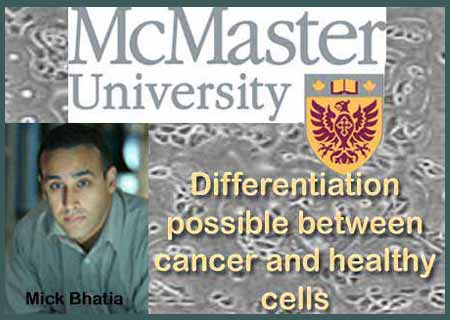Cancer treatments along with a positive effect also carry with them many negative effects. The apparent incapability of these treatments to distinguish between cancerous and healthy cells, often results in the elimination of both these cells. However a latest study suggests ways in which various treatments and drugs can be developed that only aim at the destruction of the cancerous cells.
The study authors have, for the first time, presented the difference between the cancerous and healthy human stem cells.
The discovery by Mick Bhatia, scientific director of the McMaster Stem Cell and Cancer Research Institute in the Michael G. DeGroote School of Medicine and colleagues, may progress and develop into a customized targeted treatment for individual patients.
Bhatia says that, “Normal stem cells and cancer stem cells are hard to tell apart, and many have misconstrued really good stem cells for cancer stem cells that have gone bad — we now can tell the ones masquerading as normal stem cells from the bad, cancerous ones.”
He continues, “This also allows us to compare normal versus cancer stem cells from humans in the laboratory – define the differences in terms of genes they express and drugs they respond to. Essentially, we can now use this to find the “magic bullet”, a drug or set of drugs that kill cancer stem cells first, and spare the normal healthy ones.”
The authors believe that McMaster supposedly has the finest screening and/or robotic platform and chemical libraries that form the perfect base for such a discovery.
The study authors state that their aim is to eradicate cancer in its entirety. They hope to do so soon.
This work was funded by the Canadian Institutes of Health Research, the Canadian Cancer Society; the Ontario Institute for Cancer Research and the National Cancer Institutes of Canada.
Their findings are published in the Nature Biotechnology journal.

